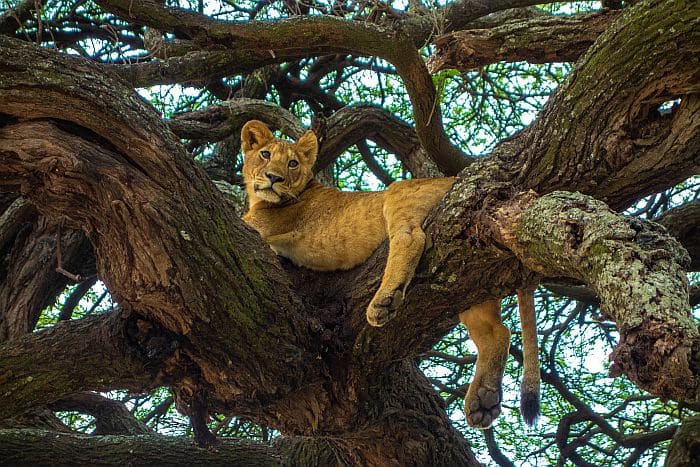Sometimes pink-tinged with the wings of migratory flamingos, Lake Manyara is home to pelicans and many other aquatic bird species.
Scroll for more
From whichever way you approach this hauntingly beautiful soda lake, your first view of Lake Manyara is spectacular. From Arusha & Tarangire side, the sheer red cliffs of the Rift Valley wall rise several hundred metres to form an impressive backdrop. But from the west on the top of the escarpment, the park lies far below – a long green strip of water glistening in the sunlight. If you are a keen birder, we recommend a safari in Lake Manyara, especially in the summer months.
The Lake Manyara National Park covers an area of 330 sq km of which two-thirds is the lake itself. The lake starred in the film Out of Africa. (Remember the famous scene when the two lovers fly over the escarpment in a tiny plane?) The rest is a mix of vegetation, open savanna, shady forest glades and fresh water streams.
Lake Manyara Park is only about 1½ hours drive from Arusha. So a safari in Lake Manyara is usually between a visit to Tarangire and the Ngorongoro crater. You can also use the Ngorongoro area as a base for a few nights and visit from there (only 1 hour away). But, given its accessibility, it does get busy with day visitors during the peak season (dry winter months).
If your time permits, we recommend staying a night or two IN the park so you can venture further south into the park, and enjoy it after the day visitors have left.

Check out the treetop canopy walk in Lake Manyara, a great additional activity to do whilst you are there.
Back to main Tanzania safari pages
